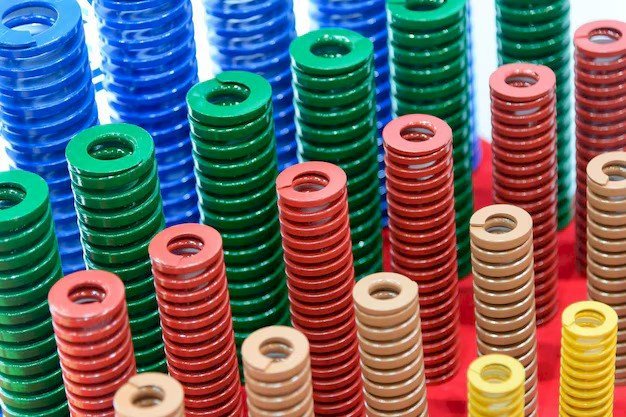Engineering Plastic for DIY Enthusiasts and Smart Home Projects
Learn how DIY enthusiasts use engineering plastic to build strong, creative, and long-lasting projects with simple ideas, better materials, and smart techniques.

DIY enthusiasts love creating practical and exciting projects that stand the test of time. To do that, they’re turning to engineering plastic, a versatile material that combines durability, flexibility, and ease of use. It’s not just strong but also simple to work with, letting makers design everything from home upgrades to mechanical prototypes.
What makes it even better is that it encourages creativity while offering reliable results for both beginners and experienced DIY enthusiasts. Keep reading to discover how this trusted material helps DIYers bring their ideas to life in smarter ways.
Why Engineering Plastic Is a DIY Essential

Image source: Pinterest.com
DIY projects often demand materials that can handle impact, pressure, and daily wear. That’s where engineering plastic stands out. It’s lighter than metal yet tough enough to resist cracking, bending, and corrosion. Many hobbyists prefer an engineering plastic sheet because it’s easy to cut, shape, and drill with standard tools, making it ideal for beginners and professionals alike.
This material comes in several forms such as nylon, acetal (also called POM), and polycarbonate. Each type offers unique advantages, from heat resistance to chemical durability. For example, acetal (POM-C) is known for its low friction, wear resistance and dimensional stability.
Whether you’re replacing metal parts or designing custom fixtures, you’ll find that engineering plastic performs reliably while keeping projects lightweight and cost-effective.
In broader industry use, engineering plastics are defined as a class of polymers with enhanced mechanical, thermal and chemical properties compared to commodity plastics.
Building Smarter Home Projects

Image source: Pinterest.com
DIY enthusiasts are using engineering plastic to create functional and long-lasting home improvements. In workshops, it’s perfect for tool holders, workbench surfaces, and drawer runners that resist scratches and friction. Around the house, you can use it to make weatherproof outdoor panels, kitchen splashbacks, or storage solutions that don’t warp or rust.
Its smooth, modern finish makes it great for decorative and practical uses. Since it comes in clear or coloured options, you can blend it into your home’s design without sacrificing style. For example, polycarbonate offers excellent impact resistance and clarity, which is useful for decorative panels or light covers.
The result is a neat, durable upgrade that looks professional and performs brilliantly for years.
Perfect For Custom Machines And Prototypes

Image source: Pinterest.com
For makers and inventors, engineering plastic is a top choice for building prototypes and gadgets. It’s commonly used to craft gears, brackets, and spacers that need accuracy and strength. Since it’s light but stable, it supports precise movement in small machines and models.
3D printing enthusiasts also benefit from this material. Using plastics like nylon or PETG (or higher-grade engineering plastics), you can produce parts that are strong, smooth, and consistent. It’s ideal for testing new mechanisms before finalising them in metal. This gives you the freedom to experiment without spending heavily on manufacturing.
In addition, many engineering plastics can handle higher temperatures, repeated use, and challenging conditions better than ordinary plastics.
Supporting Sustainable Creativity

Image source: Pinterest.com
Many DIY enthusiasts now care about reducing waste, and engineering plastic supports that goal. Recyclable and eco-friendly options help you create durable builds while staying mindful of the environment. You can also reuse off-cuts for smaller projects like planters, bins, or protective covers.
This sustainable approach aligns with the DIY spirit of creativity and resourcefulness. Instead of discarding leftovers, you can turn them into something new and useful, proving that innovation doesn’t have to mean excess.
Inspiring Everyday Innovation

Image source: Pinterest.com
Engineering plastic encourages imagination at every stage of your project. It’s strong enough for practical builds yet flexible enough for artistic ideas. You can shape it into smart storage, protective panels or even your first mechanical creation, all with a finish that lasts.
It’s a material that empowers makers to think creatively, work efficiently, and craft with confidence. With its blend of strength, versatility, and sustainability, it’s clear why so many DIY enthusiasts trust engineering plastic to turn their boldest ideas into reality.
Conclusion
In short, engineering plastic is a reliable, flexible and smart material choice for the modern DIY maker. Whether you’re building a home improvement, crafting a gadget or giving a second life to waste material, this class of plastics offers the right mix of performance and ease-of-use. By choosing engineering plastic, you open the door to durable, creative and sustainable projects that look great and last long. So gather your tools, pick the right plastic type for your needs, and let your ideas take shape with confidence.
Frequently Asked Questions (FAQs)
1. What does “engineering plastic” actually mean?
Engineering plastic refers to a group of plastic materials that have better mechanical, thermal or chemical properties than ordinary plastics. They are often used where stronger performance is needed.
2. What are the common types of engineering plastic used by DIYers?
Some common types include nylon (also called polyamide), acetal (POM), and polycarbonate (PC). Each has its own strengths like wear resistance (acetal) or impact resistance (polycarbonate).
3. Can I cut and shape engineering plastic easily at home?
Yes — one big benefit is that many sheets and blocks of engineering plastic are easy to cut, drill and shape with standard DIY tools. They let hobbyists work without needing heavy machinery.
4. Is engineering plastic suitable for outdoor or wet environments?
Yes — many engineering plastics resist moisture, chemicals and weather. For example, acetal has low moisture absorption which keeps it stable even in humid conditions.
5. How sustainable is engineering plastic compared to other materials?
It can be quite sustainable: durable materials last longer, reducing waste. Also off-cuts or leftover pieces can often be reused for smaller projects instead of being thrown away.
6. Should I always use engineering plastic instead of metal for DIY projects?
Not necessarily — engineering plastic is great in many cases because it’s lighter, easier to shape, and resistant to corrosion. But metal may still be better if extremely high strength, heat resistance or structural demands are needed. The key is to choose the right material for the job.




























